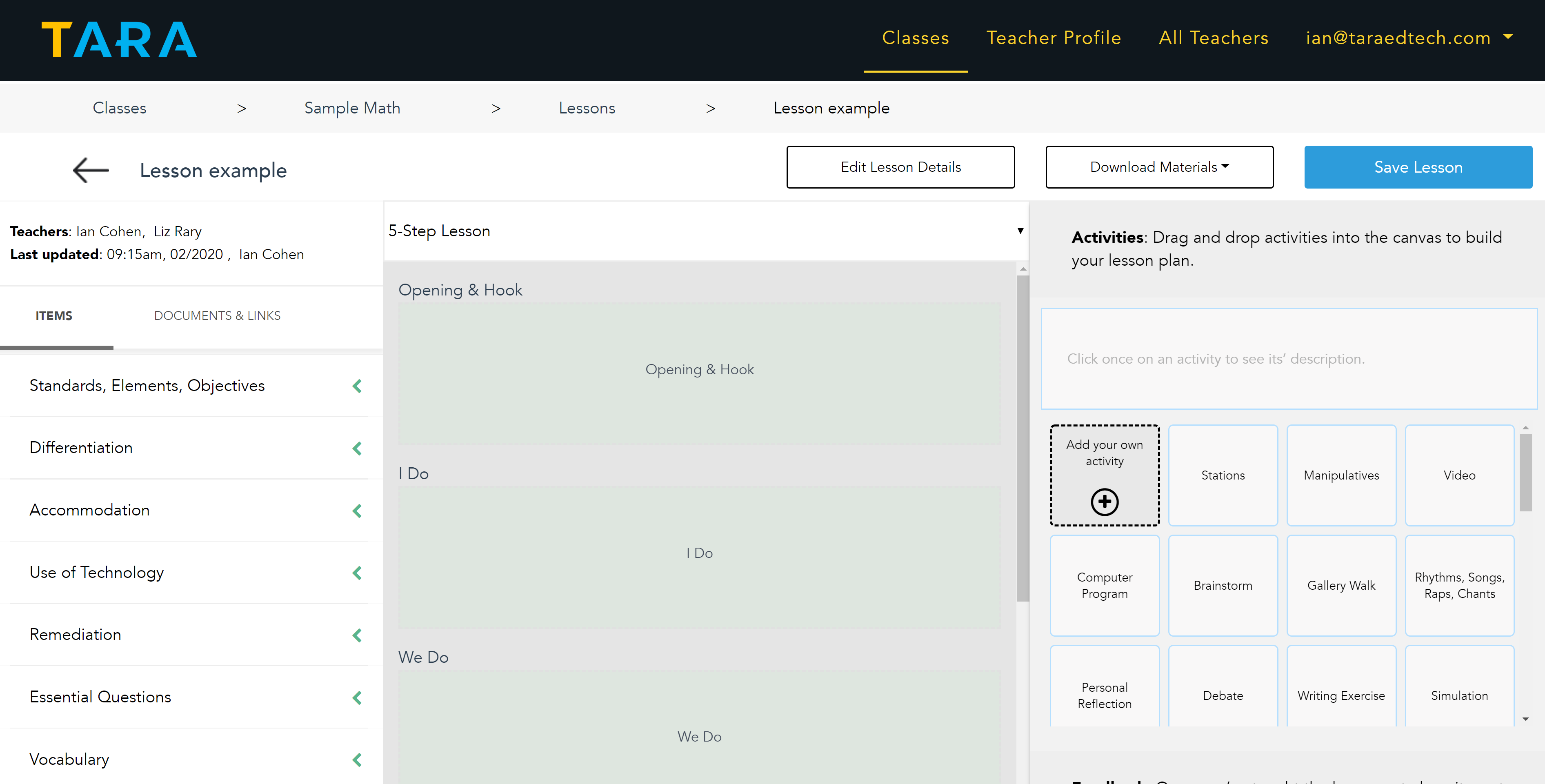Teaching Meets Machine Learning – A “Smart School” Future
By: Ian Cohen, TARA Education Technologies
March 4, 2020
“Data in education.” Whether you are an experienced educator or just an average community member, when you hear that phrase, I am willing to bet that only a single thing comes to mind – test scores. Standardized tests, SATs and ACTs, unit tests, end of course tests and so on and so on.
And now that I have listed those few examples out, you are likely thinking about how you either hated those tests, how education is ruined by those tests, or how the rest of the post is going to be about the ills of testing overall, as if no one has argued that ever before. Truth be told, a simple Google search of “testing is bad” produces >1,000,000,000 results in 0.63 seconds – so maybe that topic is a little tired.
But I don’t want to talk about testing. I want to talk about data.
And specifically, how little data is actually gathered and leveraged when it comes to teaching and learning in our current education system.
When I began my career as a high school teacher, my job was to teach 180 9th grade students World Geography over the course of a semester. The information to be covered is determined by the state department of education and is broken down into, in this instance, 6 standards with various elements for each. And conveniently, the state even goes further to provide teachers with “Teacher Notes” which dive deeper into what needs to be taught. My job as the teacher was to ensure that students “mastered” this material as evidenced by the assessments, or tests, they take throughout and at the conclusion of our semester. These assessments yield are coveted test scores.
But here is the challenge. None of those resources help me – or any other teacher for that matter – figure out how to teach the subject. I can break down content and information as well as the next person, but how do I actually engage students in a learning experience that enables them to develop and maintain an understanding of that information or skill and its significance?
That is teaching – having a diverse arsenal of strategies (i.e. discussions, simulations, experiments, exercises, etc.) is critical to being an effective educator. And understanding which students will respond to which strategies and having the ability to apply them when needed is what makes a master educator.
So – in addition to a strong grasp of subject content – it would seem that two critical components to teaching must be:
- Possessing and implementing a wide variety of engagement strategies effectively.
- Understanding your students to the degree at which you can apply a variety of strategies most effectively.
This brings us back to our original problem around data and mistakenly assuming that “test scores” are the only type and form in which data can and should present itself within education.
For example, one of the greatest shortcomings of test scores is that they are lagging indicators, meaning they only can tell us what already happened, as opposed to leading indicators which can help us predict success. Sure, many places have benchmark assessments and “checks for understanding” throughout a course to check progress and effectiveness – but all of those “checks” are lagging indicators as well.
But herein lies the opportunity.
As a local friend and teacher coach recently told me, “you have to plan for data,” meaning that you have to understand what data you want and then ensure that you use the tools and methods that will enable you to capture that data. If we shift the paradigm about what data we want, then we may be able to truly revolutionize education.
What if every teacher had a tool – a kind of virtual assistant – that could do this for them?
And that is where TARA comes in. On the surface, we address a fairly simple problem – improving the lesson planning process that teachers and schools use to ensure alignment, rigor, and accountability. We replace document-based processes with an interconnected platform that assists teachers while they create a lesson by providing them with a bank of engagement strategies, best practices, and resources to choose from. The interface is simple – just click, drag, and drop – and saves teachers anywhere from 30-60 minutes per plan.

But the true innovation of what TARA is – and will become – is centered around the data we are gathering for our teachers and schools. Over time, as we amass more and more leading indicators and incorporate greater levels of research and machine learning, TARA will become every teacher’s best friend. A true smart assistant that can analyze a class roster (i.e. student learning styles, past success, student responses, etc.) and teacher style to suggest the most effective learning experience.
And this will go well beyond just what strategies to utilize. We will enable schools to entirely reimagine their operations – everything from student groupings and teaching assignments to teacher coaching and professional development to room temperature, lighting, and layouts.
With TARA, we can truly realize the vision of a “smart school.” And not a one-size-fits-all approach like many current school models and platforms. A school shaped by on the ground context and stakeholders that maximizes the potential of our human capital instead of replacing it – while maintaining the highest possible expectations and support for our kids and the future.
###
Ian Cohen is the founder and CEO of TARA Education Technologies based in Atlanta, GA. TARA recently completed a school pilot program and is available for free trial at www.taraedtech.com. The company is actively seeking school and organization partnerships for the 2020-21 school year. Please reach out to them at [email protected] for more information.

